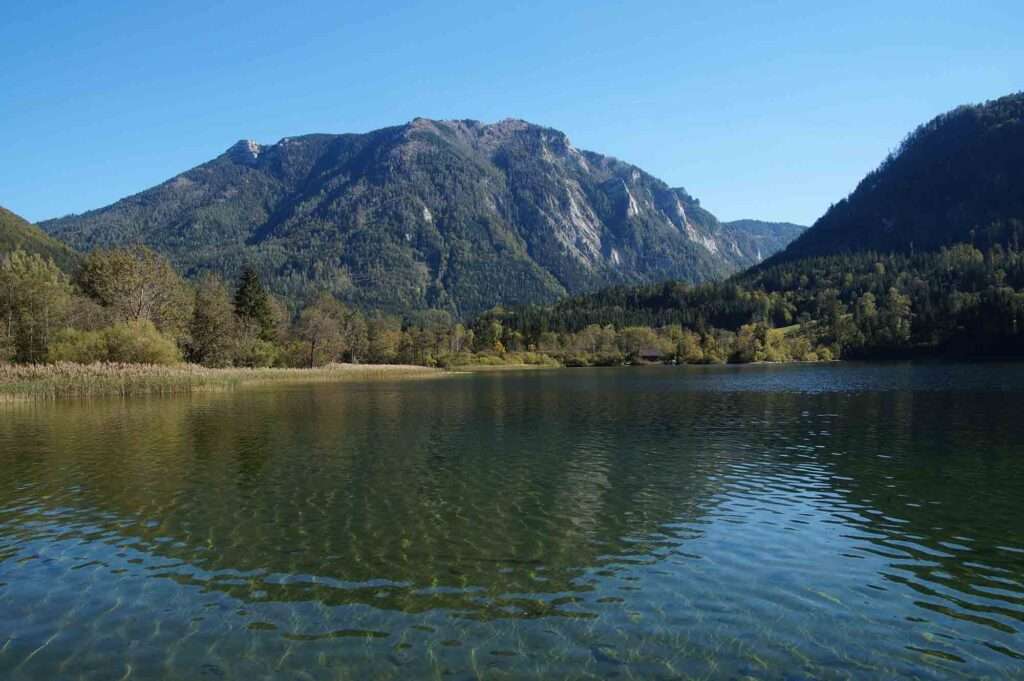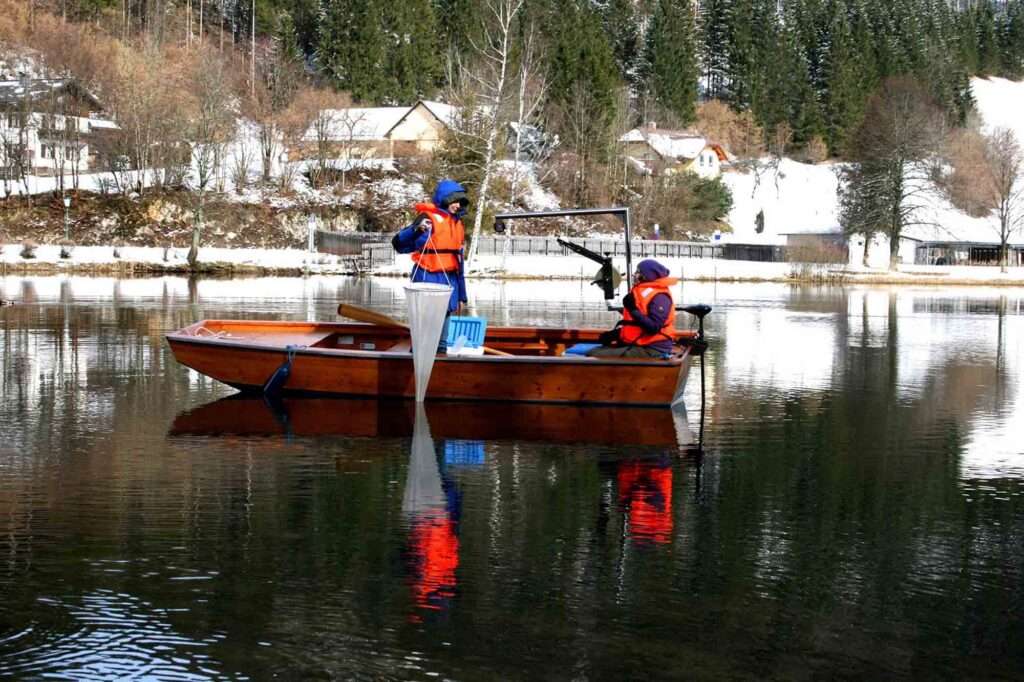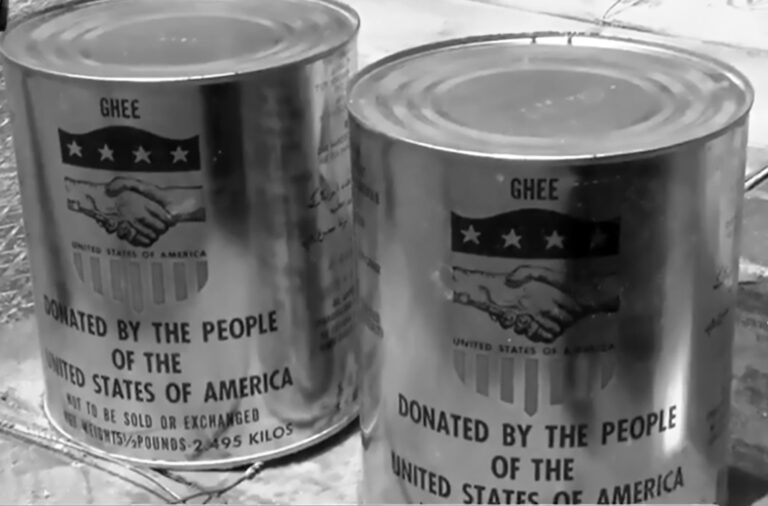The USA’s two-million-year-old Lake Tahoe, known for its insanely beautiful blue colour, contains a higher load of microplastics than the world’s most polluted oceans.
The groundbreaking research led by the University of Milan-Bicocca in Italy sampled 38 lakes and reservoirs in 23 countries around the world, including Australia, the USA, the UK and Europe.
And when the devastating results came in, they showed that plastics and microplastics can be found at each of the sites, some of which are very remote locations.
Additionally, Lake Tahoe – North America’s largest alpine lake known for its clear blue waters and scenic views – was among the top three most polluted lakes in the study.
Along with Lake Lugano – shared between Switzerland and Italy – and Lake Maggiore in Italy, the two-million-year-old freshwater lake straddling the border of the states of California and Nevada, was found to be invaded by plastics.
These reportedly exceed those in marine areas collecting large amounts of debris – known as ‘floating garbage patches’ – such as the Great Pacific Garbage Patch.

One of the study’s authors Katrin Attermeyer, from the water cluster Lunz Biological Station and the University of Vienna, said in a statement obtained by Newsflash: “These results are disturbing in that these three lakes – Lake Lugano, Lake Maggiore and Lake Tahoe – already have a higher microplastic load than the world’s most polluted subtropical ocean gyres.”
For the study, the international team of scientists used very fine plankton nets to sample the plastic debris in the lakes and reservoirs.
They then evaluated the abundance of the type of plastic waste, and later compared the results.
The team reportedly identified thousands of plastic particles that were then classified based on their shape, colour and size.
Attermeyer said: “In this way, we determined the ‘signature’ – i.e. the type and abundance – of the plastics for each lake and looked at how this signature is related to potential sources of pollution and hydromorphological features of the watershed.”
The disturbing outcome uncovered plastic waste was present in all examined freshwater systems, including those believed to have been completely uninfluenced by humans.
Moreover, 94 per cent of the plastic particles were found to be microplastics, followed by five percent of mesoplastics – sized between five and 10 millimetres (0.2 and 0.4 inches).
Above 1.5 per cent of the particles were above 10 millimetres in size.

About 21 lakes contained low concentrations of waste varying below one particle per cubic metre, while 14 of them had concentrations between one and five particles.
In turn, the three most polluted lakes contained a load of more than five particles per cubic metre.
These as well as the heavily contaminated Lough Neagh in Northern Ireland are considered important sources of drinking water for local communities, claimed the scientists.
Attermeyer emphasised that most plastic particles consisted of polyester (PES), polypropylene (PP) and polyethylene (PP).
She added: “PE and PP account for more than half of global plastic production, while PES accounts for 70 per cent of all entire production of fibres for the textile industry.”
More than 90 per cent of the plastic particles belonged to two shape categories: fibres and fragments. These were reportedly found even in areas with limited human presence, such as Avery Lake in Michigan State, USA.
The researchers argued that the two types of lake that are particularly vulnerable to plastic contamination were those in highly urbanised and populated areas and those with a large surface area.
Meanwhile, the most common plastic particle colour was found to be black – 30 per cent – followed by transparent with 24 per cent, blue with 18 per cent and white with 13 per cent.
Attermeyer pointed out that blue and black fibres from PES dominated in smaller lakes, while transparent and white PP and PE traces could be found in systems with larger surfaces.
She said: “Each lake thus had its own plastic signature, so to speak. Recording these signatures not only helps us to identify possible sources of pollution, but also to characterize its effects.”
The University of Milan-Bicocca researcher and study leader Veronica Nava explained: “Plastic that accumulates on the surface of aquatic systems can promote the release of methane and other greenhouse gases.

“Plastics can reach beyond the hydrosphere and interact with the atmosphere, biosphere and lithosphere, potentially affecting biogeochemical cycles, i.e., the circulation between the various compartments of the earth of chemical elements that pass from living matter to inorganic matter through chemical transformations and reactions, through mechanisms that have yet to be understood and require a holistic assessment of plastic pollution in lentic systems.”
Dr Hans-Peter Grossart, a scientist at the Leibniz Institute for Freshwater Ecology and Inland Fisheries, added: “Our results provide the first comprehensive picture of microplastic pollution in lakes.
“They highlight the importance of including lakes and reservoirs in the fight against microplastic pollution for pollution management and continued provision of lake ecosystem services.”
The study was published in the British weekly scientific journal ‘Nature’ on Wednesday, 12th July.
To find out more about the author, editor or agency that supplied this story – please click below.
Story By: Georgina Jadikovska, Sub-Editor: Joseph Golder, Agency: Newsflash
The Ananova page is created by and dedicated to professional, independent freelance journalists. It is a place for us to showcase our work. When our news is sold to our media partners, we will include the link here.




